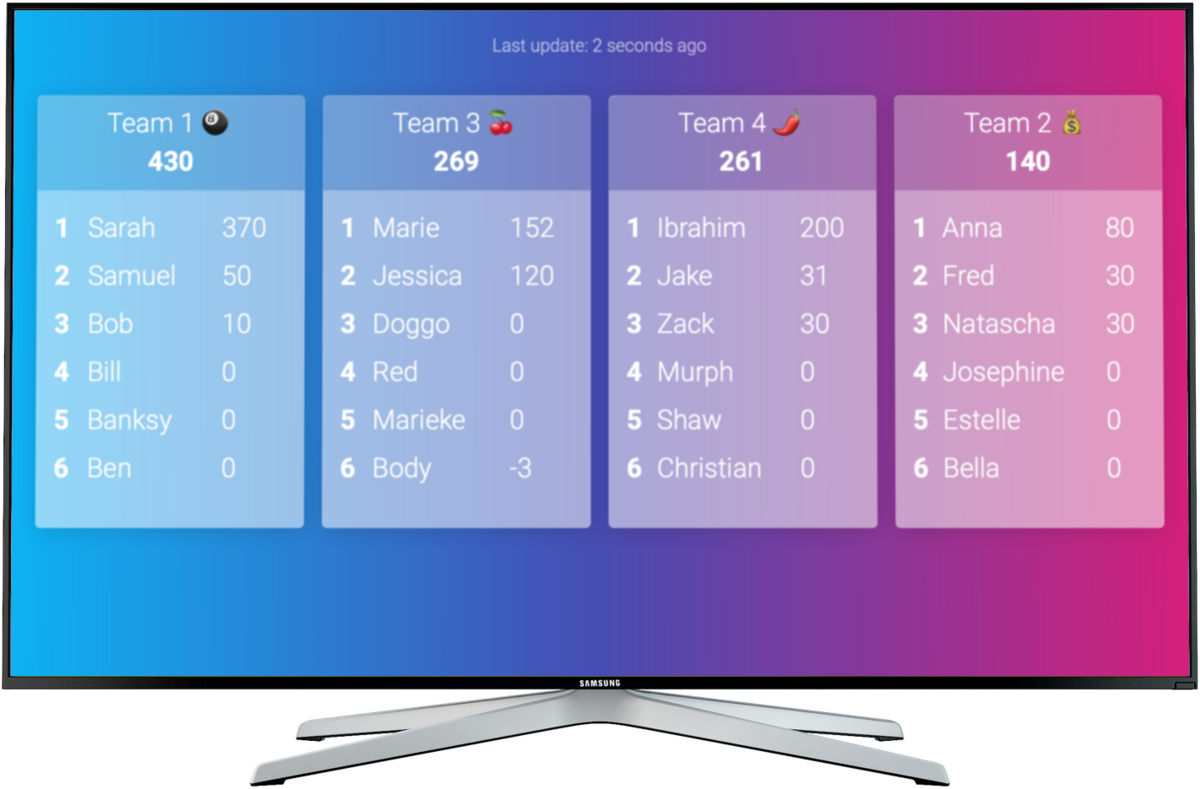Every thriving online community shares a common challenge: keeping members engaged over time. Whether it’s a Discord server for gamers, a Slack workspace for remote teams, or an educational platform for students, maintaining active participation requires more than just good content. It requires understanding what motivates people to contribute, compete, and connect.
Enter the leaderboard—a deceptively simple tool that taps into fundamental human psychology to transform passive lurkers into active community members. The science behind why leaderboards work so effectively lies deep in our evolutionary wiring and neurochemistry.

The Psychology of Leaderboard Engagement
Why We Can’t Resist Rankings
Humans are hardwired for social comparison. It’s not vanity—it’s evolution. Our ancestors survived by understanding their position within the group, and that instinct remains powerful today. Leaderboards provide instant, objective feedback about where we stand relative to others, satisfying this deep-seated need.
But the psychology goes deeper than simple comparison:
The Progress Principle: Psychologist Teresa Amabile’s research shows that making progress in meaningful work is the single most important factor in boosting motivation. Leaderboards make progress visible and measurable, turning abstract improvement into concrete advancement.
Dopamine Feedback Loops: Each climb up the leaderboard triggers a dopamine release—the same neurotransmitter involved in addiction and pleasure. This creates a powerful feedback loop: achievement → dopamine → motivation → more achievement.
Social Proof and Belonging: Leaderboards create shared experiences and common goals. When community members see others actively participating, it validates their own involvement and strengthens their sense of belonging.
The Motivation Matrix
Effective leaderboards engage multiple motivation types simultaneously:
- Achievers chase the top spots and perfect scores
- Explorers discover new strategies by studying higher-ranked players
- Socializers use rankings as conversation starters and bonding opportunities
- Competitors thrive on direct rivalry and overtaking others
By appealing to these different player types, leaderboards ensure broader community engagement than single-motivation systems.
Real-World Success Stories
Gaming Communities: The Original Leaderboard Masters
The gaming industry didn’t just adopt leaderboards—they perfected them into an art form that other industries are only beginning to understand. Take Discord gaming servers, where MEE6 and similar bots have transformed casual chat rooms into thriving competitive ecosystems. Members don’t just post messages; they earn XP for every interaction, climbing through levels that unlock coveted colored roles and exclusive channels. One 50,000-member gaming community documented their transformation: after implementing tiered leaderboards with custom rewards, their daily active users didn’t just increase—they tripled, with average session time doubling from 15 to 30 minutes.
The speedrunning phenomenon demonstrates leaderboards’ power to create entire subcultures. Speedrun.com started as a simple ranking site but evolved into the beating heart of a global movement. Here, players don’t just compete to finish games—they dissect them frame by frame, discovering glitches that save milliseconds, sharing strategies that revolutionize entire categories. The platform now hosts 2 million users who’ve submitted over 3 million runs across 20,000+ games, with some dedicated runners practicing single segments for hundreds of hours to shave seconds off world records.

Corporate Teams: Productivity Through Friendly Competition
When Revolut introduced their Karma System, skeptics dismissed it as “childish gamification”—until the results silenced all doubts. The system tracks everything from helping colleagues debug code to volunteering for company events, with karma points visible on a public leaderboard updated in real-time. What happened next surprised even the optimists: employees began spontaneously organizing knowledge-sharing sessions, documentation improved dramatically as people competed for “most helpful article” points, and cross-team collaboration increased by 300%. The company’s twofold profit increase that year wasn’t just correlated with the karma system—executives directly attributed significant portions to the cultural transformation it catalyzed.
Sales teams provide perhaps the most dramatic transformations through strategic leaderboard implementation. Consider the software company that revolutionized their sales floor by moving beyond the traditional “deals closed” metric. Their multidimensional leaderboard tracks customer satisfaction scores alongside revenue, awards points for mentoring junior colleagues, recognizes process improvements that benefit the entire team, and celebrates collaborative wins where multiple salespeople work together on complex deals. The quantitative results speak volumes—40% increase in sales, 60% improvement in team satisfaction scores, and turnover dropping from 35% to 12% annually. But the qualitative change was even more profound: salespeople who once hoarded leads now actively share opportunities, veterans eagerly mentor newcomers for mentorship points, and the toxic “wolf of wall street” culture transformed into genuine team camaraderie.
Educational Communities: Learning Through Competition
Khan Academy’s Energy Points system tracks student progress across subjects, with leaderboards at classroom, school, and global levels. Students earning energy points for completing exercises, watching videos, and helping peers. Teachers report students voluntarily spending 2-3x more time on the platform after leaderboard implementation.
Language Learning Communities like Duolingo leverage leaderboards brilliantly. Their league system groups learners of similar dedication levels, ensuring everyone has a realistic chance to advance. With 500+ million users, their retention rates prove the power of well-designed competitive systems.
Building Engagement: Core Strategies
Start With Purpose, Not Points
Before implementing any leaderboard, answer these critical questions:
- What specific behaviors do we want to encourage?
- How do these behaviors benefit the community?
- What might we inadvertently discourage?
A fitness community might track workout consistency rather than weight lifted, encouraging sustainable habits over risky maximums. A coding community might reward code reviews and mentorship alongside project completions.
The Architecture of Addictive (But Healthy) Engagement
Creating engagement without exploitation requires careful architectural decisions that respect human psychology while promoting positive behaviors. The secret lies in temporal diversity—running multiple leaderboards simultaneously across different timescales. Daily leaderboards provide that immediate dopamine hit when someone needs quick validation after a tough day. Weekly competitions maintain momentum through sustainable sprints that don’t demand constant attention. Monthly challenges let members pursue meaningful long-term goals without feeling overwhelmed. And those all-time halls of fame? They create legends and stories that become part of community lore, inspiring newcomers with what’s possible.
Diversity in measurement proves equally crucial. When you only measure one dimension, you create a monoculture where only one type of person can succeed. Smart communities measure participation frequency for the consistent contributors, quality through peer voting for the thoughtful experts, helpfulness scores for the natural mentors, creativity awards for the innovative thinkers, and improvement percentages for those just starting their journey. This multidimensional approach ensures that whether someone is a coding genius, a patient teacher, or an enthusiastic beginner, they have a path to recognition.
The bracketing system determines whether your leaderboard becomes a motivation machine or a discouragement engine. Skill-based matchmaking ensures beginners compete with peers, not intimidating experts. Regional groupings account for timezone differences and cultural contexts. Experience divisions prevent decade-long veterans from dominating newcomers. And crucially, making competitive tiers opt-in respects that some members want fierce competition while others prefer casual participation—both preferences equally valid and valuable to community health.

The Power of Team Dynamics
Individual leaderboards drive personal achievement, but team leaderboards build community. Consider these hybrid approaches:
Squad Systems: Small teams (4-6 members) compete while individuals track personal progress. This creates accountability partners and support networks within the competitive framework.
Rotation Leagues: Teams reform periodically, preventing permanent rivalries and helping members build broader connections across the community.
Mentorship Matching: Pair high-performers with newcomers, rewarding both for collective improvement. This transforms potential intimidation into collaborative growth.
Avoiding the Dark Side: Common Pitfalls
The Toxicity Trap
Poorly designed leaderboards can destroy communities. Prevent this by:
- Implementing behavioral scoring alongside performance metrics
- Creating “sportsmanship” awards that carry real weight
- Swift moderation of harassment or unfair play
- Positive reinforcement for helping struggling members
Burnout and Addiction Concerns
Engagement shouldn’t come at the cost of wellbeing:
- Set maximum daily points to discourage unhealthy grinding
- Include “rest day” bonuses that reward balanced participation
- Celebrate consistency over intensity
- Provide opt-out options without community penalties
The Rich-Get-Richer Problem
Without careful design, leaderboards can become discouraging:
- Implement catch-up mechanics that help trailing players
- Create “most improved” categories celebrating growth
- Use percentile rankings showing relative position improvements
- Reset periodically to level playing fields
Implementation: From Theory to Practice
Phase 1: Foundation (Weeks 1-2)
Start simple with a single metric:
- Choose one behavior to track (e.g., daily logins, posts created, problems solved)
- Set up basic tracking—manual is fine initially
- Display results publicly but keep rewards minimal
- Gather community feedback actively
Phase 2: Expansion (Weeks 3-4)
Based on initial response:
- Add 2-3 complementary metrics
- Introduce basic rewards (badges, titles, minor privileges)
- Create time-based competitions (weekly challenges)
- Begin segmenting users if community is large enough
Phase 3: Sophistication (Months 2-3)
With proven engagement:
- Implement team elements
- Add qualification tiers or leagues
- Introduce special events and seasonal competitions
- Develop automated tracking systems
Phase 4: Optimization (Ongoing)
Continuous refinement:
- A/B test different scoring systems
- Survey community satisfaction regularly
- Adjust based on participation patterns
- Celebrate success stories publicly

Tools and Platforms for Community Leaderboards
For Discord Communities
- MEE6: Comprehensive leveling and moderation
- Arcane: Advanced analytics and customization
- YAGPDB: Flexible scripting for custom systems
For Workplace Teams
- Leaderboarded: Simple, visual leaderboards perfect for office displays
- Bonusly: Peer recognition with point systems
- 15Five: Performance tracking with gamification elements
For Educational Groups
- Classcraft: Full RPG experience for classrooms
- ClassDojo: Behavior and achievement tracking
- Kahoot: Quiz-based competitive learning
For a comprehensive comparison of these and other educational platforms, check out our guide to top gamification tools for schools.
For Custom Solutions
Building your own? Consider these factors:
- Real-time updates maintain engagement momentum
- Mobile optimization ensures accessibility
- API integration enables automated tracking
- Data export options provide transparency
The Neuroscience of Sustained Engagement
Recent neuroscience research reveals why leaderboards create lasting behavioral change:
Variable Reward Schedules: Like slot machines, the uncertainty of when you’ll climb ranks maintains engagement longer than predictable rewards.
Social Feedback Integration: Brain imaging shows that social rewards activate the same regions as monetary rewards, explaining why digital recognition feels genuinely valuable.
Goal Gradient Effect: We accelerate effort as we approach goals. Leaderboards make these gradients visible, naturally increasing motivation at crucial moments.
Measuring Success: KPIs for Community Leaderboards
Track these metrics to evaluate your leaderboard’s effectiveness:
Engagement Metrics
- Daily/Monthly Active Users (DAU/MAU)
- Average session duration
- Return visitor rate
- Actions per user
Community Health Indicators
- New member retention (30/60/90 day)
- Member-to-member interactions
- Support request volume
- Churn rate changes
Behavioral Changes
- Desired action completion rates
- Quality metrics (if applicable)
- Peer assistance frequency
- Knowledge sharing increases
Sentiment Analysis
- Community survey scores
- Voluntary testimonials
- Social media mentions
- Internal NPS scores
The Future of Community Leaderboards
AI-Powered Personalization
Machine learning will create individualized challenges and difficulty adjustments, ensuring optimal engagement for each member’s skill level and availability.
Blockchain Integration
Verifiable achievements and portable reputation scores across platforms will make community contributions more valuable and transferable.
Augmented Reality Experiences
Physical spaces will merge with digital leaderboards, creating location-based challenges and real-world community interactions.
Wellness-Integrated Systems
Future leaderboards will balance engagement with wellbeing, automatically adjusting to prevent burnout while maintaining motivation.
Conclusion: Building Communities That Thrive
Leaderboards aren’t just about competition—they’re about connection. When implemented thoughtfully, they transform disparate individuals into thriving communities united by shared goals and mutual support.
The key is remembering that behind every username and score is a human being seeking progress, recognition, and belonging. Design your leaderboards to serve these fundamental needs, and you’ll create more than just engagement—you’ll build a community that members genuinely want to be part of.
Ready to implement leaderboards in your community? Start simple, iterate based on feedback, and always prioritize community health over raw metrics. The most successful communities use leaderboards not as ends in themselves, but as means to foster genuine human connection and collective achievement.
Want to create your own community leaderboard? Try Leaderboarded free today and see how friendly competition can transform your community’s engagement in minutes, not months.